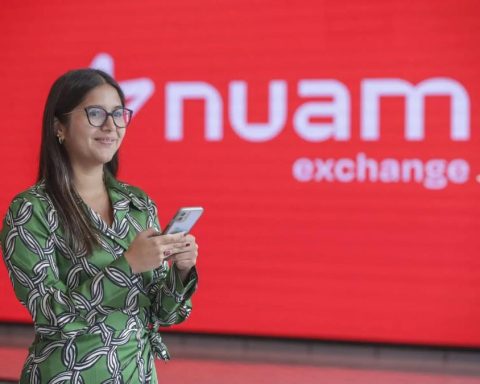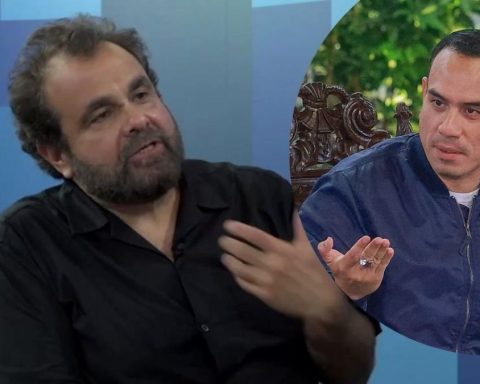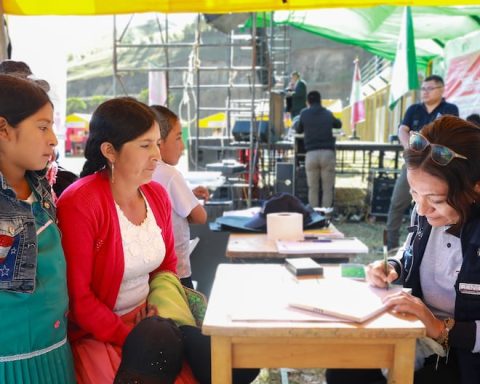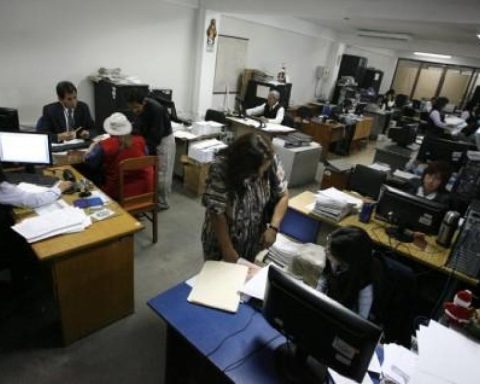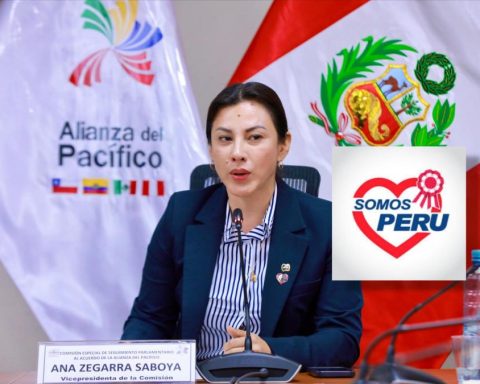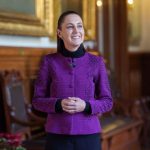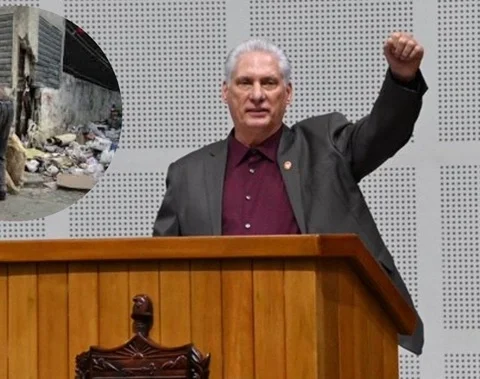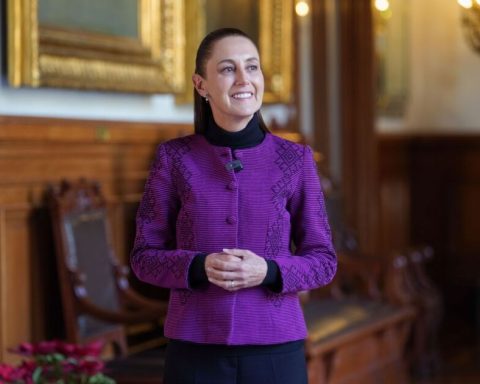− Before the arrival of the first civilista Manuel Pardo, the republic was dominated by the military.
− The military had a presence in the construction of the Peruvian state. They are worthy citizens of the republic because they fought in ayacucho (1824). It is probably the only corporation to survive the collapse of the system. After a succession of disputes, the faction of Ramón Castilla triumphs. Guano is found, then this prebendary model is created, which I call prebendary patrimonialist in 1844, and eight years later, that model enters into crisis. Those who are disputing power are the civilians who represent different economic groups: wool, sugar, artisans and liberal sectors that failed in their attempt to displace the military.
− Does that historical moment in your book have a historical connection to the present moment? The State continues to be seen as loot.
− The heritage model was never dismantled. It went through mutations, but the logic is that from time to time, factions, gangs, some criminals, come in, organized to take the greatest possible advantage of the State that survives these perforations. In recent history, there have been presidents arrested, denounced, committed suicide. It is a trend that was born in the early years of the republic. As we see with Gustavo Montoya in our latest book, Lima is a crossroads where people from Gran Colombia, Chile, and people from the River Plate arrive. All with the objective that the Peruvian State pay them for the services provided (in independence). It is such a powerful model that it is still moving.
− It does not seem that we are talking about a political class but about lumpen people.
− It is an installed model. Even those who try to change it, dismantle it are trapped by that logic. There are new actors, but the set design, choreography, script, remain and each time more lumpenesque, each time more obvious.
− This structural failure is also addressed in this other book Patrias Andinas, Patrias Citadinas.
− It is a book co-authored with Gustavo Montoya, a renowned historian from San Marcos. We talked about the pandemic in search of the DNA of Peruvian politics. and we discovered that these realities exist in the cities of the coast and Andean part (…) In relation to the previous question, it is a model that imposes betrayal and disloyalty. Under this logic, there is no possibility of building institutions. We are born with an original betrayal, a succession of coups d’état that ends with the last one in 1829. We (with Montoya) bring it up for discussion that it is the coup against La Mar. They deport him without trial, without defense and send him to die in Costa Rica. Civil wars are coming. And already, when guano appears, the model is reformulated, but the State continues as booty.
− It is important to look in the mirror of history so as not to make the same mistakes again, but there is no such exercise.
− Cesar Hildebrandt He said that someone who does not know their history is condemned to a permanent repetition, a sort of myth of eternal return. James Joyce (book’s epigraph) said: ‘history is a nightmare from which we are trying to wake up’. In every political shift, when one faction replaces the other, it also destroys pieces of history. (…) There is a lobotomization where the actors they do not realize that they are repeating what Mariano de Arce called a simulation of a republic. He quickly realizes that the participation of the military in this coup against Congress, which is leading to a simulation of a republic. Everything becomes a farce and he identifies it and leaves it written down for history. Do we remember Arce? No. Do we remember that he warned us that this was going to become a big lie? Neither (…) If there is no common interest in public welfare, the struggles will be repeated ad eternum, which is what we are witnessing. Our history holds the keys, but we are not interested in going back to them.
prebendary teacher. Castillo repeats the same prebendary model of 200 years ago.
− In his book, which he published during the pandemic, The Cracked Republic, he says: lights enter through the cracks and the lights are signals.
− The light identifies the deep structural cracks of the republic. An unequal republic, with very fragile institutions that are permanently humiliated. This book was written in the first year of the pandemic. The second part is essays to face the health and political plague. Realizing that this apparent economic development was useless. Hospitals collapsed, people died from lack of oxygen. I remember that moment, of that lady here in Arequipa, who was chasing the caravan of Vizcarra because she was asking for help for her infected husband who was in a tent. When you finally look in the mirror and accept what you are, and all you have left is an honest rectification. There is a phrase by Nietzsche: ‘when you look into the abyss for a long time, the abyss also looks at you’. I believe that we are at that moment, to look at these deprived parts of our republic. They told citizens to stay in their homes, but they had no water. I speak of light in an optimistic, reflective way, it is not for healing.
− Then the bicentennial is celebrated and Peru opts for a very symbolic election: a rural teacher from Cajamarca. Has the president lost all that symbolic capital?
− Sure. Such was the weariness of failure. There was the perfect situation for the outsider to appear, robberies from the treasury, party crises. The outsider presented himself as a teacher who will refound the Republic. He says he is going to close the Government Palace. In an interview I said that it would be interesting to look at the pitch again. We have the resources for this famine. However, we realized that the rural teacher could not buy urea.
− And this rural teacher, Pedro Castillo, is a prebendary?
− The teacher enters this kind of enchanted palace where he will perfectly repeat what he considered his enemies did. It’s like a tragic story. Secondly, this possibility of renewing the policy, will pass the bill to those who supported him, because they are not able to recognize, that beyond the symbol, there is an ignoble behavior with Peru. Peru continues to be hurt. One thought that one would be cured if one took into consideration the countryside, the vitality that the rural world has, a teacher and now we are facing a new disappointment.
− And there is a kind of trial, that ultimately that is Peruvian society. Hildebrandt said it: he is the prototype of the Creole Peruvian.
− I do not totally agree. This country is sustained by invisible work. The work of those who get up every day. He walked very early through Arequipa. I love to see the man selling his tamales, the lady with her sweets. They are working. It does not represent me, I do not feel that it represents me (Pedro Castillo). It represents an old system, which draws on a series of characters to destroy it. We have to pay attention to those who take care of the forests and confront the loggers, who confront the traffickers in women, abandoned by the State. I wrote a little text called: Angamos en Saweto. It deals with Peruvians who are in an extreme situation and are not at all a scoundrel, a Creole. We must be harsh in judgment, but neither should we beat ourselves up by saying that Peru is represented by this man who is repeating 200 years of history, which he says is going to end it, but it seems that it is the final episode of a very tragic story.
− Anyway, the outlook seems bleak…
− Peru is not only cloudy Lima, fighting this permanent news war. There is a vibrant Peru.
“Tarma had to give Lima its independence”
− In the book Patrias Andinas, patrias citadines, in the first years of the republic two scenarios appear: the coast and the mountains. You say they talk?
− There is like a conversation. Riva Agüero is an interlocutor, a tragic character with followers in the regions who have the same illusion for the country. In Lima the discussion takes place, ideas between republic and monarchy. And on the side of what would be the guerrillas in the mountains, there we describe the arrival of Álvarez de Arenales, received with flowers, with music.
− You have said that hope is lost there, then we enter a self-destruction?
− This is a great discovery by Gustavo Montoya. Tarma had to give Lima its independence (with the guerrillas of that vibrating sierra). That is lost because San Martín is committed to a negotiated exit, what Gustavo and I call controlled independence. Lima acquires a preponderant role, but not by making a real policy, but a virtual one, of fog of war, of lies, of conspiracies, which ends up being the role assigned to Lima until today.
The data. The historian Carmen Mc Evoy participated in several tables at the Hay Festival. She not only spoke about the republic, but also about the 100th anniversary of Yma Sumac.
